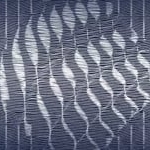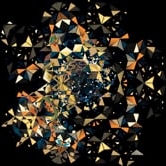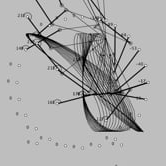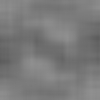Max Cooper | Penrose Tiling
Max Cooper
"Another way to approach the idea of infinity visually was via Penrose Tiling. This link between non-cyclic structure and the infinite was also central to the processes of improvisation used throughout. But for this piece I wanted to mirror the tiling regime more explicitly. I opted to do that by having all loop lengths corresponding to prime numbers. This yielded the equivalent behaviour musically, where at least for the length of the track (and for two weeks or so if it had gone on playing), there would be no exact repeat of any bar - loops without loops. The feeling of this idea was a nice rhythmical syncopation which I applied to some live instrumentation with the sansula to begin with, and built more and more layers of tight percussion around as the piece progressed.“
Jessica In
“Penrose tilings are geometrical packings of a pair of rhombohedral tiles that can be used to tile a flat plane ad infinitum without the pattern ever repeating itself. Although comprising of a set of regular rhombus blocks, it is non-periodic, meaning that it lacks translational symmetry. Penrose tiling may be constructed so as to exhibit both reflection symmetry and five-fold rotational symmetry - the tiling has scaling self-similarity, so the same patterns occur at larger and larger scales. For the Infinite visuals, the pattern is constructed in a way to try and reveal the growth of the tiling, spinning out in trails that initially appear to be random but gradually exhibit the underlying structure. The work explores the visual properties of the tiling to exhibit a mixture of regularity and disorder that somehow retains an order to the eye. Different scales are superimposed to explore the tiling’s self similarity that occurs through its different hierarchical levels of composition and decomposition. Smaller and smaller tiles are created as they are continually broken into these ratios, generating a potentially infinite tilling structure."


















